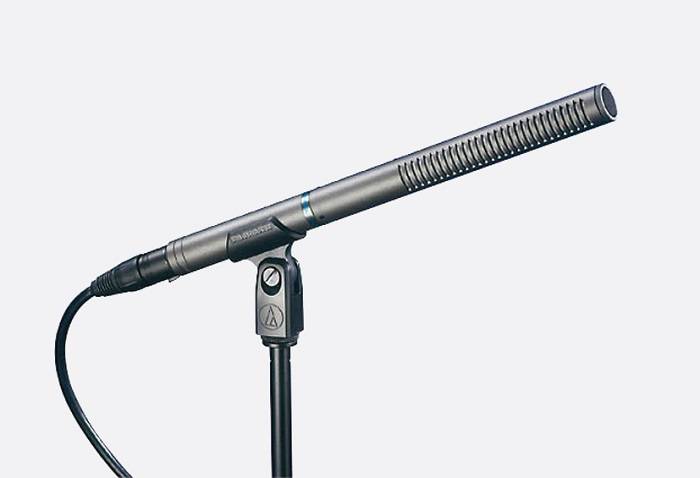Table of Contents
In the realm of audio recording and broadcasting, the choice of microphone plays a pivotal role in capturing clear and crisp sound. Unidirectional microphones, also known as cardioid microphones, are among the most popular types of microphones due to their focused pickup pattern and ability to reject off-axis noise. In this comprehensive guide, we’ll delve into the world of unidirectional microphones, exploring their characteristics, applications, advantages, and best practices for optimal use.
Understanding Unidirectional Microphones:
![]()
Unidirectional microphones are designed to capture sound primarily from one direction while attenuating sound from other directions. This focused pickup pattern makes them ideal for recording sources directly in front of the microphone while minimizing background noise and interference from the sides and rear. The most common type of unidirectional microphone is the cardioid microphone, named for its heart-shaped polar pattern.
Characteristics of Unidirectional Microphones:
Unidirectional microphones exhibit several key characteristics that set them apart from other microphone types:
- Focused Pickup Pattern: Unidirectional microphones have a focused polar pattern that captures sound primarily from the front while rejecting sound from the sides and rear. This helps isolate the desired sound source and reduce unwanted noise and interference.
- Off-Axis Rejection: Unidirectional microphones offer excellent off-axis rejection, meaning they are less sensitive to sound coming from the sides and rear. This allows for cleaner and more focused recordings, especially in noisy or acoustically challenging environments.
- Directional Sensitivity: Unidirectional microphones are most sensitive to sound coming from the front, with reduced sensitivity to sound from other directions. This helps minimize feedback and ambient noise pickup, making them suitable for live sound reinforcement and recording applications.
- Versatility: Unidirectional microphones are versatile tools that can be used in a wide range of recording scenarios, including vocals, instruments, podcasts, broadcasts, interviews, and field recording.
Applications of Unidirectional Microphones:

Unidirectional microphones find numerous applications across various industries and recording environments:
- Live Sound Reinforcement: Unidirectional microphones are commonly used for live performances, concerts, conferences, and events to amplify vocals and instruments while minimizing feedback and background noise.
- Studio Recording: Unidirectional microphones are a staple in recording studios for capturing vocals, acoustic instruments, electric guitars, and percussion with clarity and precision.
- Broadcasting and Podcasting: Unidirectional microphones are popular among broadcasters, podcasters, and radio hosts for delivering clear and intelligible speech while minimizing room noise and interference.
- Field Recording: Unidirectional microphones are ideal for field recording applications such as film production, documentary filmmaking, wildlife recording, and location sound capture, where ambient noise rejection is essential.
- Interviews and Dialogue: Unidirectional microphones are well-suited for capturing dialogue and interviews in noisy environments, ensuring that the focus remains on the subject while minimizing background distractions.
Advantages of Unidirectional Microphones:
Unidirectional microphones offer several advantages that make them preferred choices for many recording and sound reinforcement applications:
- Focused Sound Capture: Unidirectional microphones capture sound from a specific direction, allowing for precise and focused recordings with minimal background noise pickup.
- Feedback Rejection: Unidirectional microphones excel at rejecting feedback and handling high sound pressure levels (SPL), making them suitable for use in live sound reinforcement and stage monitoring applications.
- Isolation: Unidirectional microphones provide isolation from off-axis noise sources, allowing the desired sound source to stand out while reducing unwanted sound reflections and reverberation.
- Versatility: Unidirectional microphones are versatile tools that can be used for a wide range of recording tasks, from vocals and instruments to podcasting, broadcasting, and field recording.
- Portability: Many unidirectional microphones are compact and lightweight, making them portable and convenient for on-the-go recording and live performance applications.
Best Practices for Using Unidirectional Microphones:

To maximize the performance of unidirectional microphones, consider the following best practices:
- Optimal Placement: Position the microphone close to the sound source for optimal signal-to-noise ratio and clarity. Experiment with microphone placement and angle to find the sweet spot for capturing the desired sound.
- Pop Filter: Use a pop filter or windscreen to reduce plosive sounds (such as “p” and “b” sounds) and minimize wind noise when recording vocals or speech.
- Monitor Audio Levels: Keep an eye on the microphone’s audio levels and adjust input gain or microphone distance as needed to prevent clipping or distortion.
- Check for Interference: Be mindful of potential sources of interference, such as electronic devices, wireless routers, or noisy equipment, that may affect microphone performance. Position the microphone away from sources of interference to minimize unwanted noise pickup.
- Room Acoustics: Consider the acoustics of the recording environment and use acoustic treatments such as foam panels, rugs, or curtains to minimize reflections and reverberation, improving audio quality.
Related Post:
Solving the Frustration: Why Earbuds Keep Falling Out and How to Fix It
Why You Should Never Compromise Quality When Choosing Your Walking Boots
Why Choose RocketCert for Your MN Contractor License
Unidirectional microphones, with their focused pickup pattern and off-axis rejection, offer unparalleled clarity and precision in capturing sound. Whether used for live sound reinforcement, studio recording, broadcasting, or field recording, unidirectional microphones provide a versatile and reliable solution for capturing high-quality audio with minimal background noise and interference. By understanding their characteristics, applications, advantages, and best practices, users can harness the full potential of unidirectional microphones and achieve professional-grade results in their recording and sound reinforcement endeavors.

